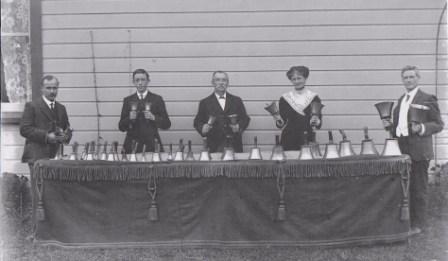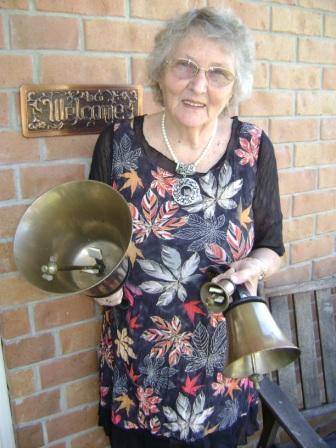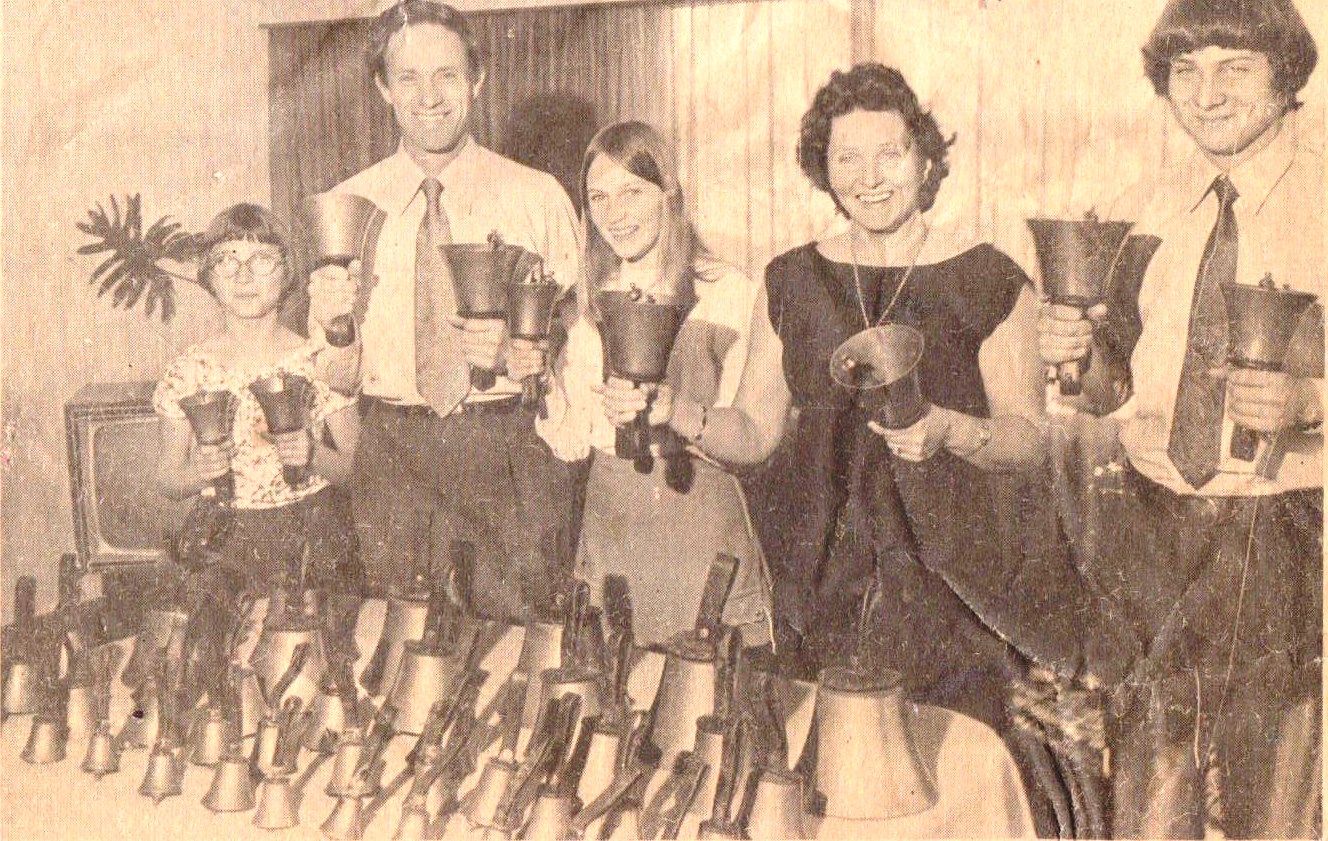Ring out those bells
The name of Edward Edridge will always be associated in Nelson with Wai-iti School and the company of bellringers he established there in the 1880's.
The name of Edward Edridge will always be associated in Nelson with Wai-iti School and the company of bell-ringers he established there in the 1880's. Born in Westrip, Stroud in 1849, he trained as a teacher and emigrated to New Zealand in 1875. In 1882 he accepted a position as master of Wai-iti school and stayed there until his retirement in 1911.
Music was a consuming passion in his life, but he was also praised by school inspectors for his excellent standard of teaching and "efficiency." Soon his home became a real "conservatorium of music". He taught singing and piano, led the Anglican choir at Foxhill, established a harmonic society and eventually formed a company of bell-ringers.
In an age without the widespread availability of recorded music, live performances in concerts and small groups or around the family piano were the staple of Edwardian entertainment. Being able to play a musical instrument or sing was the entrée to many social occasions. Handbell ringing effectively required a minimum of 4-6 "ringers" and the requisite skills to produce a pleasing sound in performance. They were also a unique novelty.
Edward bought the bells gradually as his finances permitted from the Whitechapel Bell Foundry in London. He would have needed about 20 before he could play a worthwhile tune. Eventually he owned 52.
Concerts were an easy way of raising funds for the school and Edward employed his two sons to good effect in these. As H.E. Edridge records in his memoirs, "..my younger brother and I were trained to sing character songs and went with the bells usually. Between bell items and our songs, we filled the evening." In one solo item called "Fifty Years Ago" I wore a white beard, dress coat, breeches with buckles at the knee but just before I went on the feather in a hat worn by my younger brother contacted a candle. You can imagine the rest. However, it was an excellent setting for my item, as my quivering voice portrayed old age, though the audience little knew the cause of the quiver."
Transporting the bells was quite a feat..."52 bells, a strong folding table, four pairs of blankets and a crimson plush hanging for front of table, with gold drapings, quite flash" - all this needed to be set up with the bells in the right order before a concert could begin.
But it was worth it. A concert review in 1887 reported:
"The big features of the entertainment were the performances of Mr Edridge and his son. Mr Edridge is a highly accomplished musician and his great instrument is a beautiful set of bells. From these he rendered a variety of popular English, Scottish and Irish melodies in a manner that captivated everyone. Time, tune and touch were wonderfully accurate and the choice melodies...were produced with a brilliancy and effect that few other instruments could approach....Master Edridge, quite a little mite, is for a mere child a wonderfully accomplished mimic...In the make-up of a venerable octogenarian, grey bearded with swallow tailed coat and tight breeches, leaning hard on his stick he sang ‘Fifty Years Ago' in a way that pleased, delighted and highly amused every listener."
Today the bells are in the possession of Mr Edridge's great-granddaughter, Mrs Val Porter of Stoke. They were last played by her family in 1972 at a concert in Wakefield as part of the centennial celebrations of the Wakefield Methodist Church. They are her family's taonga but they are really a treasure for the whole district since they have lived in this area for 125 years. They are in excellent condition and quite valuable. To be heard, however, they need the expertise, love and care of a dedicated group of bell ringers who are part of an organisation of some permanency: a church - the Nelson School of Music (now the Nelson Centre for Musical Arts) perhaps. She hopes that some day the bells will be heard again.
Note: Since this story was written the bells have been lodged with the Nelson School of Music
2014. Updated May 2020
Story by: Roger Batt
Sources
- Memoirs of H.E. Edridge
- Interview with Val Porter, 2013
Further Sources
Books
- Bleby, E. (2001) Their sound has gone forth : a history of change ringing in Australia and New Zealand to 2001. Millswood, S. Aust. : Australian and New Zealand Association of Bellringers
http://www.worldcat.org/oclc/155513771
Websites
- Wai-iti, in The Cyclopedia of New Zealand [Nelson, Marlborough & Westland Provincial Districts] (1906) Retrieved from NZETC:
http://nzetc.victoria.ac.nz/tm/scholarly/tei-Cyc05Cycl-t1-body1-d1-d2-d12.html


